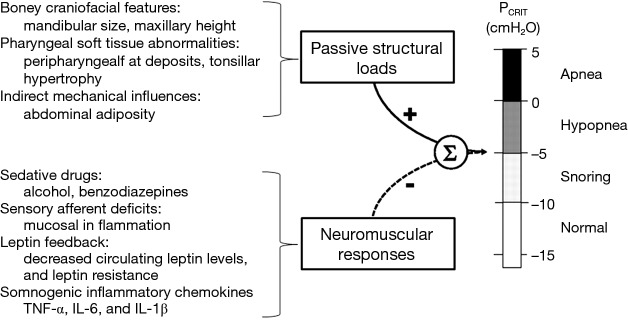Figure 7.

Upper airway collapsibility is the result of the sum of passive structural loads, which increase PCRIT, and neuromuscular responses, which decrease PCRIT and stabilize an inherently collapsible upper airway. Increased airway collapsibility therefore requires defects in both upper airway structure, and neuromuscular responses. Alterations in boney craniofacial features (e.g., retrognathia, decreased maxillary height) and soft tissues (e.g., peripharyngeal fat deposits and tonsillar hypertrophy) may account for structural loads. Defects in neuromuscular responses may arise from sedative drugs, sensory afferent deficits, alterations in leptin levels and/or leptin responses, or somnogenic inflammatory chemokines that may be related to obesity. Adapted from Patil et al. 2007 (48).
